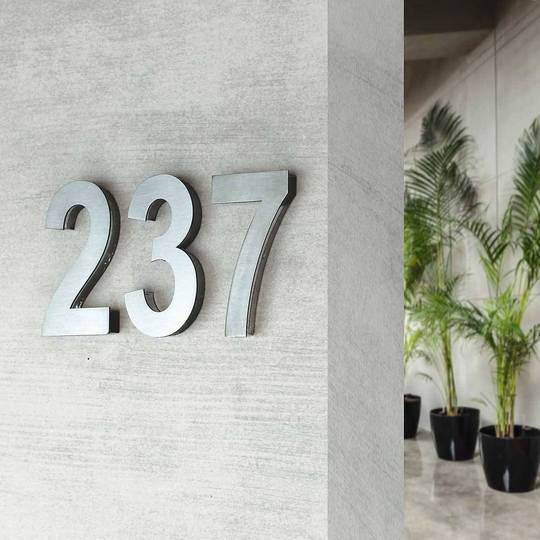
How did the interior signs come about? The history of evolution and contemporary appearance
The earliest signs of human life cropped up even before the advent of writing. Since it is possible to transmit messages even through elementary drawings. Over time, the signs have been permanently upgraded, becoming more appealing and functional. In this article, we will take you through the brief history of eras of the evolution of interior signs: from inscriptions on rocks to their modern form.
The appearance of the first interior signs

As you can imagine, the early interiors were as plain as possible: stone walls of caves, animal skins and a fireplace. Consequently, the indoor signage was not fanciful at that time. Our ancestors left behind messages in caves, scratching or drawing a variety of illustrations with charcoal. In these prehistoric times, signs served as a method of communication and were also used for rituals and ceremonies.
The emergence of ancient civilizations

The following step of evolution was the emergence of civilizations such as Egypt, Greece and Rome. Carved stones, wood, and frescoes were used in temples and palaces for designation of significant places and conveying messages. Besides, humans had already learned how to process metal, so they could produce genuine signs. The inscriptions on the walls and tablets described historical events, religious rites, and assisted in honoring the gods. This was somewhat reminiscent of interior signs in appearance and purpose, but the following period brought the emergence of modern items even closer.
The Middle Ages

In the Middle Ages, indoor signs acquired a broader functional character. In monasteries and castles, various signs and coats of arms were used to designate rooms, chapels, and other premises. Sign makers produced signage from wood or metal, and also added decorative elements. Such signs not only carried information but also expressed an exclusive style.
Renaissance and Baroque
In the Renaissance and Baroque era, interior signs became even more exquisite. Signs of marble, bronze, and gold that indicated the names of rooms, galleries, and other important places were used in palaces and manors. Decorative elements such as engraving and inlaying became an integral part of signs and a prestige indicator.
Industrialization
With the inception of the industrial revolution, the capability of mass production of indoor signs arose, so they became more common and affordable. The use of new materials such as plastic and aluminum enabled the production of functional signs for factories, offices and public buildings. Standardization and unification have become the fundamental principles in the manufacturing of interior signs.
Contemporary interior signage

Nowadays, interior signs have become high-tech and aesthetically appealing. The application of various materials, such as acrylic, glass, wood, stainless steel, as well as new technologies, including laser engraving and 3D printing, enables us to craft signs of any complexity and design.
Today, it is not only a way of communication. For businesses, it is also an important element of decor and branding, a way to stand out and be remembered.
Advantages of modern interior signage

-
Functionality
Modern indoor signs are able to include not only text information, but also icons, logos for brand identity, QR codes, and other elements. Furthermore, in accordance with the Disabilities Act, Braille is now included in signage to ensure that everyone can understand the message. -
Aesthetics
Due to the diversity of materials and technologies, indoor signage can be adjusted to any interior style. The Bsign assortment has a broad variety of Interior Door Signage, along with customization capabilities. -
Interactivity
Certain contemporary signs can be interactive. There are digital signs that can glow, allow you to change information and add animations. -
Simplicity of installation
A lot of modern signs are designed in such a way that they can be effortlessly installed and dismantled. Now you don't have to make a hole in the wall or door to attach the sign. This provides uncomplicated replacement of signs without causing damage to the premises.
Conclusions
Interior signs for business have come a long way from the wall paintings of early history to high-tech and aesthetically eye-catching items of modern times. And even despite that the world has considerably changed, the significance of signs in human's life remains consistent.
Contemporary interior signs are much more refined, they not only carry out an informational function, but also become an indispensable element in the design of premises. This allows you to create a convenient and friendly space, considering the corporate identity.
You can comfortably choose high-quality and modern signs by signing up for a free consultation from Bsign. Complete your interior perfectly!
































